

Suunto Blog
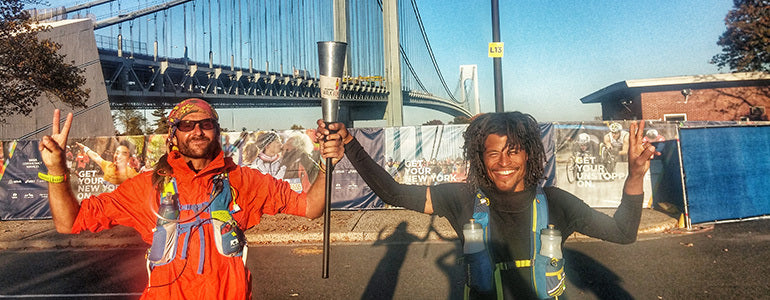
Dirtbag runners visit the United Nations
Ultrarunners Patrick Sweeney and Alex Ramsey did something very special this week. Aside from taking the Torch of Humanity to the United Nations, they also wore shoes.
Barefoot runners Patrick Sweeney and Alex Ramsey are not accustomed to wearing shoes. Their footwear of choice are ultra minimalist Luna Sandals, which they ran 1368 km from Chicago to New York in over the last weeks for the Champion's Walk for Peace, an initiative to raise $250,000 to build a peace education school in Kenya’s troubled North Rift Valley.Click here to read more about the Champion's Walk of Peace
Patrick (left) and Alex stand next to Wilson Kipsang at the United Nations. But this week they decided to dress up for a change. The two friends put on collared shirts and normal shoes to pass on the Torch of Humanity at the United Nations. They passed it over to Kenyan runner Wilson Kipsang Kiprotich, the former world record holder for the fastest marathon time and the 2014 winner of the New York Marathon. “It was a pretty special moment,” Patrick says. “Wilson Kipsang is one the world's greatest runners. Not only that he is a great humanitarian and it was our honor to pass the torch over to him.”So far the initiative has raised just over $100,000 of the total funds required to build the school. People can still donate here.Get inspired with Patrick's running motivation tips!Patrick with multisport athlete Laura Kline.
After handing over the torch, Patrick and Alex aren’t returning to office jobs and the usual urban lifestyles.
They’re both real deal dirtbag runners so there’s only one thing on the cards for them and that’s more running in beautiful places. Patrick, a Suunto supported athlete, is heading to the Copper Canyons in Mexico to visit his friends among the Tarahumara, a Native American people renowned for their long distance running ability. Then, before the year is out, he’s running in a 50 km, a 50 mile, 100 mile and a 72 hour race. “To me a dirtbag runner is someone whose passion for running and the running community goes beyond the clock and the finisher buckle,” he says. “Being a dirtbag runner is about sharing good times with good people through the sport of running and, at least in my case, it usually involves sharing a few ales, too.”
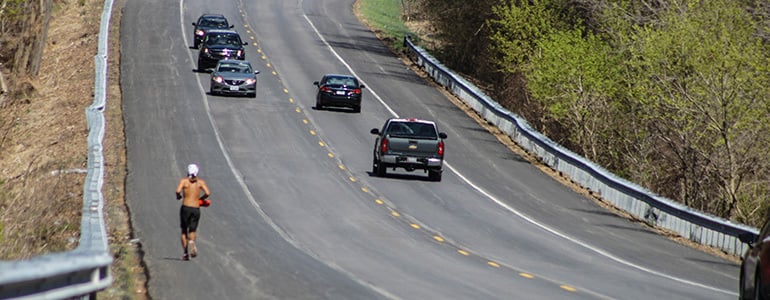
Running from Chicago to New York for peace
Earlier this year he ran from California to Boston, now the “real Forrest Gump” Patrick Sweeney is back at it again, running from Chicago to New York. This time it’s for peace.
Suunto supported athlete Patrick Sweeney and running friend Alex Ramsey completed the Chicago Marathon earlier this month and just kept on running. The two are running all the way from Chicago across four states and 1368 km to New York City where they will end their journey by running in the New York Marathon on November 1.Patrick (left) and Alex holding the 'torch of humanity'
Since starting out, they’ve covered more than 1100 km and have a short distance to go. They’ve been doing about 72 km a day – and in minimalist running shoes. Aside from a few aches and pains, their bodies are holding up and they’re having a blast.
They are both seasoned ultramarathoners. Running mind boggling distances isn’t a chore to them, it’s a way of life.
“Everything is just coming together in a magical way,” Patrick says. “A lot of the course has been quite beautiful and remarkably amazing.”
Click here to read Patrick’s running motivation tips
Patrick with multisport athlete and fellow vegan Laura Kline.
As they’ve run, they’ve taken turns carrying the ‘torch of humanity’. The torch is a symbol for the Champions Walk for Peace, an international effort to raise USD$250,000 to build a peace education school in Kenya’s North Rift Valley where ethic violence and inter-communal conflict has resulted in 600 deaths and 435,000 displaced people in 2014 alone, according to reports from the UN. Organized by genocide prevention NGO Aegis Trust, the torch began its journey in July from the North Rift Valley – the Cradle of Civilization – in the hands of Kenyan running stars who carried it northward. In the second leg, British runners carried the torch 3540 km across the UK to London. Now Patrick and Alex are on route to the New York Marathon where they will return it to the Kenyan runners who first began its journey. “It’s a cause we are grateful to champion,” Patrick says “Nobody should have to live their life in fear. “The school in Kenya will help educate people about their differences so they can work together and create peace.”
Read about Patrick’s previous run across the USAMany supporters and runners have come out to join them on the road. Author of the famous book Born to Run Christopher McDougall invited them to sleep at his house for the night and joined them on the road. The tricky things have been finding vegan food and negotiating dangerous roads. “I’m poor and vegan so my food options are not that plentiful,” Patrick says. “In the mornings I usually eat a few energy bars and a peanut butter sandwich for lunch and for dinner it’s almost always an avocado sandwich with pickle chips and a cold beer whenever I can find one.”
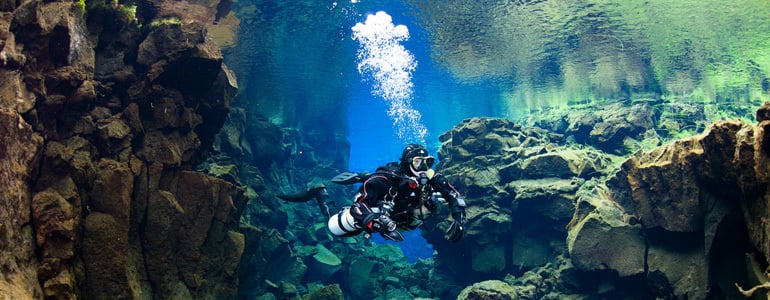
Dancing with Devil Rays
Suunto ambassador Jill Heinerth recently explored dive locations around the Azores islands in the Atlantic Ocean. The destination’s wrecks, megalithic steps and lava caverns blew her mind, but swimming with devil rays was one of the greatest diving experiences of her life.
The devil ray or mobula is species of eagle ray that can grow up to five meters long. They are sometimes called flying rays because of their propensity to breach the ocean surface. They are endangered because of water pollution and bycatch capture.
Underwater explorer and photographer Jill Heinerth swam with about 30 devil rays in open ocean over a sea mount off Santa Maria Island in the Azores. Devil rays visit the area to feed. Jill recounts the experience below.
“As I patiently waited, they seemed to line up in formation and repeatedly moved closer and closer with graceful ease,” she says. “Each followed along the same path arching towards me, sliding sideways for a look and then turning to come even closer. “Hovering over top of me, they would pause while I held my breath as long as I could. Finally I would exhale bubbles from the scuba regulator and the ray would slip away and allow the next one to move over top of me. “It seemed as though they were interested in getting tickled by my stream of bubbles. The dance went on for almost 90 minutes. “It was one of the most spectacular diving experiences of my life."
Press play to watch this beautiful video of that day
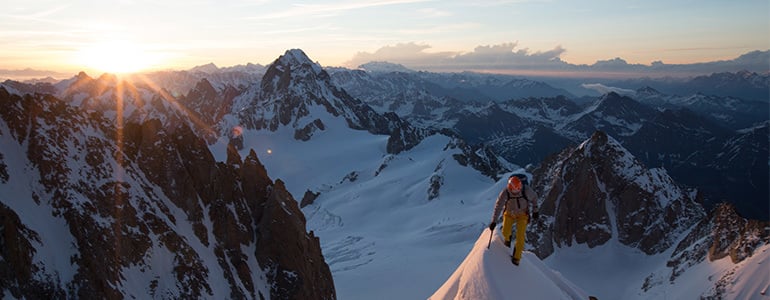
Bad weather ends Ueli Steck’s Nuptse climb
Freezing temperatures and strong winds scuttled the Swiss Machine’s attempt to climb 7861 m Nuptse in Nepal. Is he disappointed? No, he feels stronger than ever! Suunto ambassador Ueli Steck and climbing partner Colin Haley reached 6900 m on Nuptse before abandoning their attempt to reach its summit.
Nuptse. © Ueli SteckWhile a borderline weather window opened on October 23 and 24, conditions were poor with a temperature of -28°C and a 50 km/h winds at the summit. The weather report for the following days predicted worse; -35°C and 80 to 100 km/h winds. “We decided to give it a go on the south face anyway,” Ueli says. “We scooped a fast, less technical line and hoped to at least reach the top. But from the beginning the meteorological test wasn’t positive.” No one has successfully climbed Nuptse via its highly technical south face since Russian climbers Valeri Babanov and Yuri Koshelenko first did it in 2003.
Climbing the south face. © Ueli SteckUeli, Colin and two French climbers began the attempt from Chuckung valley at 04:30 and reached the base of the south face two hours later. After changing boots, they began the climb, which included sections of ice at 75° degrees, but mostly between 35° and 45° degrees. “It was beautiful climbing,” Ueli says. At around 14:00, they reached 6900 m and set up camp for the night. The following day they planned to summit and return to camp. But it wasn’t to be. Strong winds that night and in the morning made it too dangerous to continue so they packed up and returned to Chuckung. “It’s just impossible with 50 to 60 km/h winds to climb at that altitude without getting frostbite,” Ueli says. “There was also a significant amount of fresh snow so avalanche danger was also a factor.”
© Ueli SteckDespite not achieving his goal, Ueli says he learns and grows as a climber from every climb, whether successful or not. Another attempt on Nuptse is on the cards in the future. “It’s the perfect mountain to me,” Ueli says. It’s almost 8000 m, which is definitely another game than climbing 6000 or 7000 m peaks. “Also, it’s not a remote mountain that takes weeks to get to. I like the climbing, but I don’t like too much hiking.” Over the coming winter months, Ueli plans to work on and present slideshows of his big summer in the mountains. In spring next year, he and German alpinist David Goettler will attempt to climb 8027 m Shishapangma, the 14th highest mountain in the world, via its technically demanding south face.
© Ueli Steck
For now, he's back in Switzerland enjoying some well deserved rest time.
“I am super postive from the trip to Nuptse,” Ueli says. “I didn’t have many restdays and I climbed and ran a lot. I feel stronger then ever!”
Click the links for part one, part two and part three of our series on Ueli Steck’s Nuptse expedition.
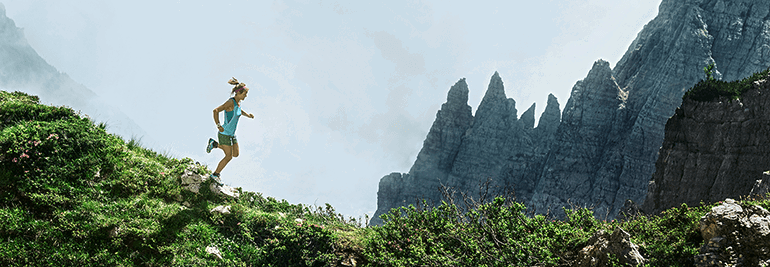
A week in the life of Emelie Forsberg
Step into Suunto ambassador Emelie Forsberg’s running shoes for a week of training, yoga, gardening, baking and cooking. When it comes to the mountain lifestyle, she’s living the dream. Take a peek into her world and be inspired!
Trail running champion Emelie Forsberg lives in Chamonix in the French Alps and spends her days running around the Mont Blanc massif. But her life isn’t all intense training and competition. She has downtime and spends it doing yoga in stunning outdoor locations, tending her vegetable garden, studying and baking her signature treats. “I think for me, because I haven't always been in the world of training and racing, as many other athletes have, I find it very important to do other things on the side of the athlete life,” Emelie says. “I like to make up new recipes, read biology articles to keep my education up-to-date. I love taking time for the garden, and harvesting veggies in the summer and autumn. I also like writing, which I do for a Swedish magazine. All of these hobbies make my life as an athlete better!”
Press play to watch Emelie talk about her love of running
Monday: double training session
Morning: I often wake up early (5 or 6 am), which means the sun has not normally risen over the mountains to reach the house. I often do yoga inside and then I make a coffee and go outside and walk around my little garden. I eat some homemade muesli and yoghurt. I leave the house and start the training. The first run is a harder session with some intervals.Noon: After getting home from my run, I prepare the lunch, usually with something from the garden. My favourite food now is a zucchini lasagne with tomatoes and cheese and Swiss chard. Then I need to catch up with emails and when I’m finished I bake some tasty cookies to enjoy that night. Afternoon/evening: Then it’s time for the afternoon session and I go for an hour easy run. Afterward, I do stretching and 10 core and back exercises. Prepare my running pack for the following day. I always go to bed early because I wake up early.
Emelie recently attended a one week yoga camp. © Emelie Forsberg
Tuesday: long mountain day
Morning: Wake up early and take a quick breakfast. Grab my pack and go into the mountains. Training: Often the approach is around 3.4 hours and then the climbing and scrambling starts. I like to choose mountains where you need crampons and one ice axe. Evening: Coming home around dinnertime, I prepare a good dinner with veggies from the garden and then I spend the rest of the evening at home and maybe on the sofa reading. I like easy reading books that are like movies, like books by Ken Follet, or sometimes books by people like John Muir and Umberto Eco.
Emelie has two vege patches. One is 3 m x 3 m, the other 1 m x 1.5 m. © Emelie Forsberg
Wednesday: easy day
Morning: I go on a short morning run before breakfast, come back and catch up with computer work. Then I bake something and do some gardening. I like to bake cakes, pastries and desserts as well as sourdough or fruit and nut bread. I experiment with flour like with chickpea flour, coconut flour and almond flour. Afternoon: I do a yoga session in the afternoon. This is a rest day.
Click here to read more about Emelie Forsberg
Cinnnamon buns are one of her favorite things to bake. © Emelie Forsberg
Thursday: mixed day
Morning: Yoga, coffee in the sun, then breakfast followed by a three hour run at a good pace. The pace depends on the terrain, but it’s almost racing pace.Noon: Lunch, with veggies from the garden. Afternoon: Roller skiing. Only uphill!
Emelie's tips for improving your trail running!
She runs straight out of her door and into the mountains. © Emelie Forsberg
Friday: interval day
Morning: Yoga, coffee in the sun, breakfast and then an interval training session. Afternoon: A two-hour easy paced run
A coffee in the sun is a daily must in her routine. © Emelie Forsberg
Saturday: rest day
Just taking it easy today. Maybe going for an easy run.
"I love maps! Looking to new routes and adventures," Emelie says. © Emelie Forsberg
Sunday: big day
This is normally a race day! If there’s no race, I normally do about a four hour run in the morning and stretch and do a core workout in the afternoon.Click here for Emelie's power pancakes recipe!
Emelie does a core workout surrounded by her gardening equipment © Emelie Forsberg
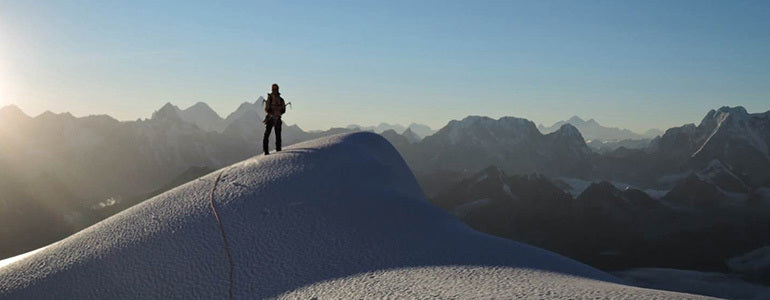
Ueli Steck ready for Nuptse
Strong winds above 7000 m in the Himalaya have made things more difficult for Suunto ambassador Ueli Steck. But a good weather window might open just long enough for him to make a dash to the summit of 7861 m Nuptse. Here’s part three of our four part series. Swiss alpinist Ueli Steck is ready to make an attempt on Nuptse any day now. While he’s been enjoying good weather in Khumbu Valley, where he’s been acclimatizing since late September, strong winds above 7000 m have forced him and climbing partner Colin Haley to consider an easier line up the notoriously difficult south face of the mountain.
Ueli caught up with fellow Suunto ambassador Kilian Jornet. © Ueli Steck“We might start tomorrow or the day after tomorrow for an attempt,” Ueli says. “We decided to choose a different route because of the conditions and weather. “The weather window is quite short and the conditions are not great. But we will try!” No one has successfully climbed Nuptse via its highly technical south face since Valeri Babanov and Yuri Koshelenko first did it in 2003. However, whereas the two Russian climbers climbed it with fixed ropes, Ueli and Colin intend to climb it in the far more challenging alpine style, which means a one-time single push to the top.
Click for more about Nuptse
Kilian Jornet is training in Nepal. © Ueli Steck
Meanwhile, Ueli has been enjoying perfect weather up to about 6000 m. He’s been spending his days running and climbing smaller peaks. Suunto ambassador and mountain runner Kilian Jornet is also in the valley and the pair caught up and went climbing together. “Kilian, Helias Millerioux and myself did a little tour climbing today,” Ueli says. “It’s just great to hang out with these guys. It’s very inspiring for me. The hope for Nuptse is still alive!”
Tenji Sherpa on the summit ridge of Cholatse. © Ueli Steck
Ueli also teamed up with Tenji Sherpa, a Nepalese mountain guide, and together they climbed 6440 m Cholatse via its north face. In 2005, Ueli made the first solo ascent via the north face. “Tenji became the first Nepali to climb this difficult face,” Ueli says. “It’s so cool to see this new young generation of Sherpa that loves to climb and not only for business!” Stay tuned for the next report on Ueli’s attempt on Nuptse. Click the links for part one and part two of our four part series.






































































